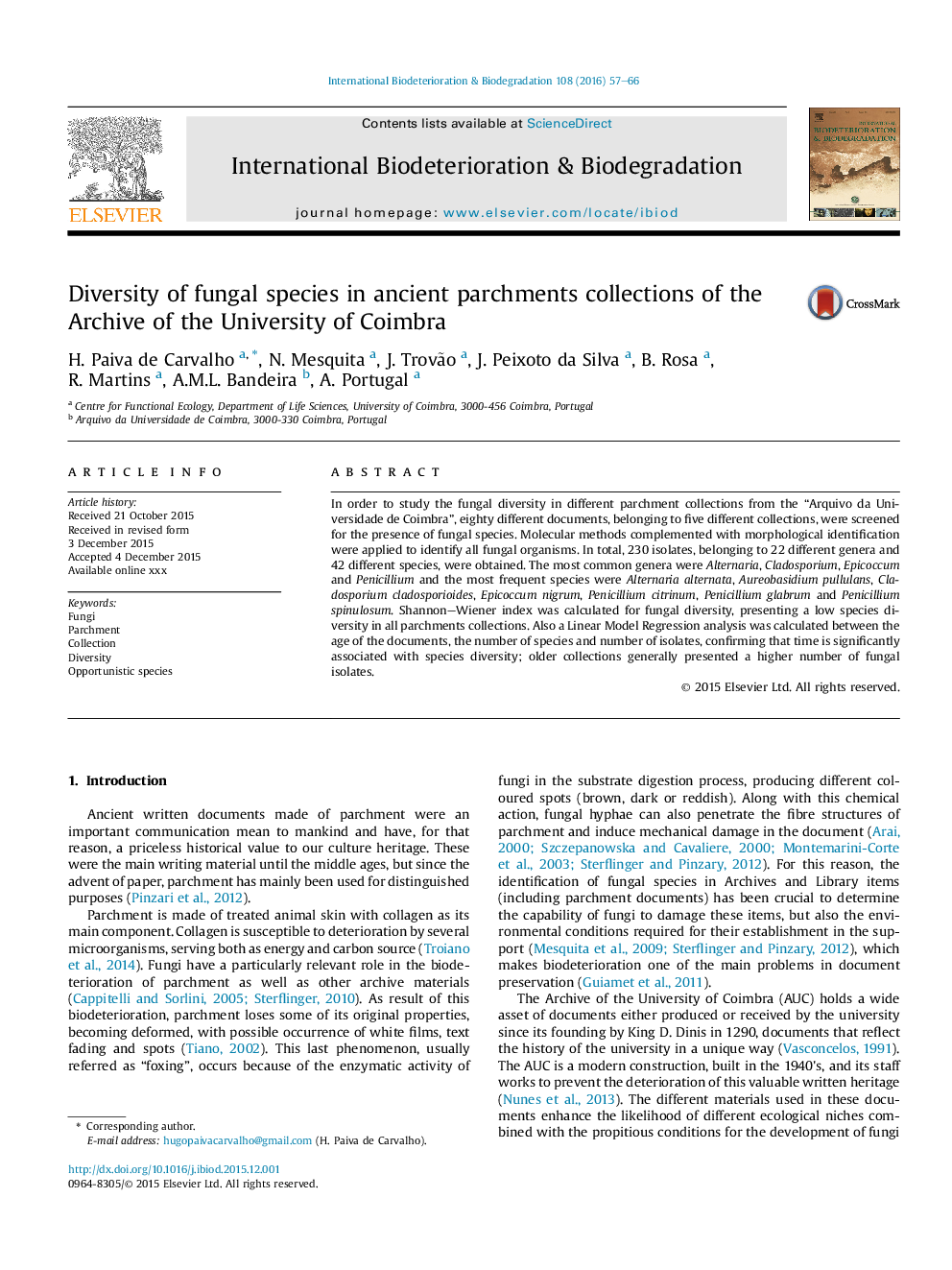| Article ID | Journal | Published Year | Pages | File Type |
|---|---|---|---|---|
| 6289179 | International Biodeterioration & Biodegradation | 2016 | 10 Pages |
Abstract
In order to study the fungal diversity in different parchment collections from the “Arquivo da Universidade de Coimbra”, eighty different documents, belonging to five different collections, were screened for the presence of fungal species. Molecular methods complemented with morphological identification were applied to identify all fungal organisms. In total, 230 isolates, belonging to 22 different genera and 42 different species, were obtained. The most common genera were Alternaria, Cladosporium, Epicoccum and Penicillium and the most frequent species were Alternaria alternata, Aureobasidium pullulans, Cladosporium cladosporioides, Epicoccum nigrum, Penicillium citrinum, Penicillium glabrum and Penicillium spinulosum. Shannon-Wiener index was calculated for fungal diversity, presenting a low species diversity in all parchments collections. Also a Linear Model Regression analysis was calculated between the age of the documents, the number of species and number of isolates, confirming that time is significantly associated with species diversity; older collections generally presented a higher number of fungal isolates.
Related Topics
Life Sciences
Environmental Science
Environmental Science (General)
Authors
H. Paiva de Carvalho, N. Mesquita, J. Trovão, J. Peixoto da Silva, B. Rosa, R. Martins, A.M.L. Bandeira, A. Portugal,
